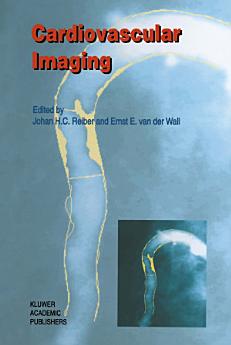Cardiovascular Imaging
Johan H. C. Reiber · Ernst E. van der Wall
dek, 2012 · Developments in Cardiovascular Medicine 186-kitob · Springer Science & Business Media
E-kitob
578
Sahifalar soni
reportReytinglar va sharhlar tasdiqlanmagan Batafsil
Bu e-kitob haqida
In the past, coronary arteriography was the only modality available to provide high quality images of the coronary anatomy. Quantitative coronary arteriography (QCA) was developed, implemented, validated and extensively applied to obtain accurate and reproducible data about coronary morphology and the functional significance of coronary obstructions. Over the last few years extensive basic technological research supported by clinical investigations has created competing modalities to visualize coronary morphology and the associated perfusion of the myocardial muscle. Currently, the following modalities are available: X-ray coronary arteriography, intracoronary ultrasound, contrast- and stress-echocardiography, angioscopy, nuclear cardiology, magnetic resonance imaging, and cine and spiral CT imaging.
For all these imaging modalities, the application of dedicated quantitative analytical software packages enables the evaluation of the imaging studies in a more accurate, reliable, and reproducible manner. These extensions and achievements have resulted in improved diagnostics and subsequently in improved patient care. Particularly in patients with ischaemic heart disease, major progress has been made to detect coronary artery disease in an early phase of the disease process, to follow the atherosclerotic changes in the coronary arteries, to establish the functional and metabolic consequences of the luminal obstructions, and accurately to assess the results of interventional therapy.
Aside from all these high-tech developments in cardiac imaging techniques, the transition from the analogue to the digital world has been going on for some time now. For the future, it has been predicted that the CD-R will be the exchange medium for cardiac images and DICOM-3 the standard file format. This has been a major achievement in the field of standardization activities. Since these developments will have a major impact on the way images willbe stored, reviewed and exchanged in the near future, an important part of this book has been dedicated to DICOM and the filmless catheterization laboratory.
Cardiovascular Imaging will assist cardiologists, radiologists, nuclear medicine physicians, image processing specialists, physicists, basic scientists, and fellows in training for these specialties to understand the most recent achievements in cardiac imaging techniques and their impact on cardiovascular medicine.
For all these imaging modalities, the application of dedicated quantitative analytical software packages enables the evaluation of the imaging studies in a more accurate, reliable, and reproducible manner. These extensions and achievements have resulted in improved diagnostics and subsequently in improved patient care. Particularly in patients with ischaemic heart disease, major progress has been made to detect coronary artery disease in an early phase of the disease process, to follow the atherosclerotic changes in the coronary arteries, to establish the functional and metabolic consequences of the luminal obstructions, and accurately to assess the results of interventional therapy.
Aside from all these high-tech developments in cardiac imaging techniques, the transition from the analogue to the digital world has been going on for some time now. For the future, it has been predicted that the CD-R will be the exchange medium for cardiac images and DICOM-3 the standard file format. This has been a major achievement in the field of standardization activities. Since these developments will have a major impact on the way images willbe stored, reviewed and exchanged in the near future, an important part of this book has been dedicated to DICOM and the filmless catheterization laboratory.
Cardiovascular Imaging will assist cardiologists, radiologists, nuclear medicine physicians, image processing specialists, physicists, basic scientists, and fellows in training for these specialties to understand the most recent achievements in cardiac imaging techniques and their impact on cardiovascular medicine.
Bu e-kitobni baholang
Fikringizni bildiring.
Qayerda o‘qiladi
Smartfonlar va planshetlar
Android va iPad/iPhone uchun mo‘ljallangan Google Play Kitoblar ilovasini o‘rnating. U hisobingiz bilan avtomatik tazrda sinxronlanadi va hatto oflayn rejimda ham kitob o‘qish imkonini beradi.
Noutbuklar va kompyuterlar
Google Play orqali sotib olingan audiokitoblarni brauzer yordamida tinglash mumkin.
Kitob o‘qish uchun mo‘ljallangan qurilmalar
Kitoblarni Kobo e-riderlar kabi e-siyoh qurilmalarida oʻqish uchun faylni yuklab olish va qurilmaga koʻchirish kerak. Fayllarni e-riderlarga koʻchirish haqida batafsil axborotni Yordam markazidan olishingiz mumkin.









